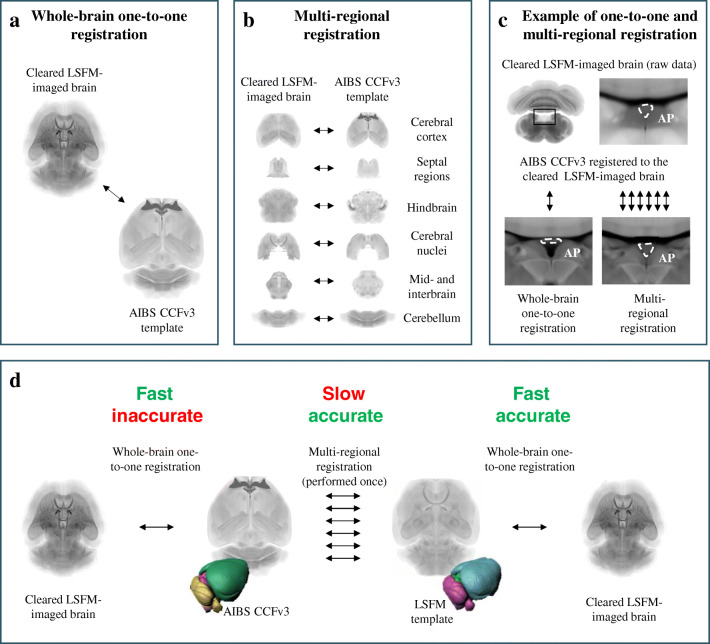Fig. 2.
Techniques for registering LSFM-imaged samples with the AIBS CCFv3. a) Illustration of one-to-one registration between a cleared LSFM-imaged sample and the AIBS CCFv3 template. b) Illustration of multi-regional registration between a cleared LSFM-imaged sample and the AIBS CCFv3 template, where the brain volumes have been divided into six larger brain areas that are mapped individually. c) Example of the registration quality in area postrema (AP) using either one-to-one or multi-regional registration. d) Illustration of the registration flow described in this manuscript. Using one-to-one registration for aligning cleared LSFM-imaged samples with the AIBS CCFv3 is fast but inaccurate in some brain regions like the AP. Multi-regional registration for aligning cleared LSFM-imaged samples with the AIBS CCFv3 template provides better accuracy but is relative slow compared to the one-to-one registration. By generating a template from cleared LSFM-imaged brains and registering the AIBS CCFv3 with it once using multi-regional registration approach we ensure good alignment accuracy between the two templates. Subsequent registrations of cleared LSFM-imaged brains with the LSFM template can then be done directly using fast one-to-one registrations. This way it is possible to achieve both fast as well as accurate registration of cleared LSFM-imaged brains. Regardless of computer performance the speed of analysis improved by a factor of six compared to the multiregional registration

